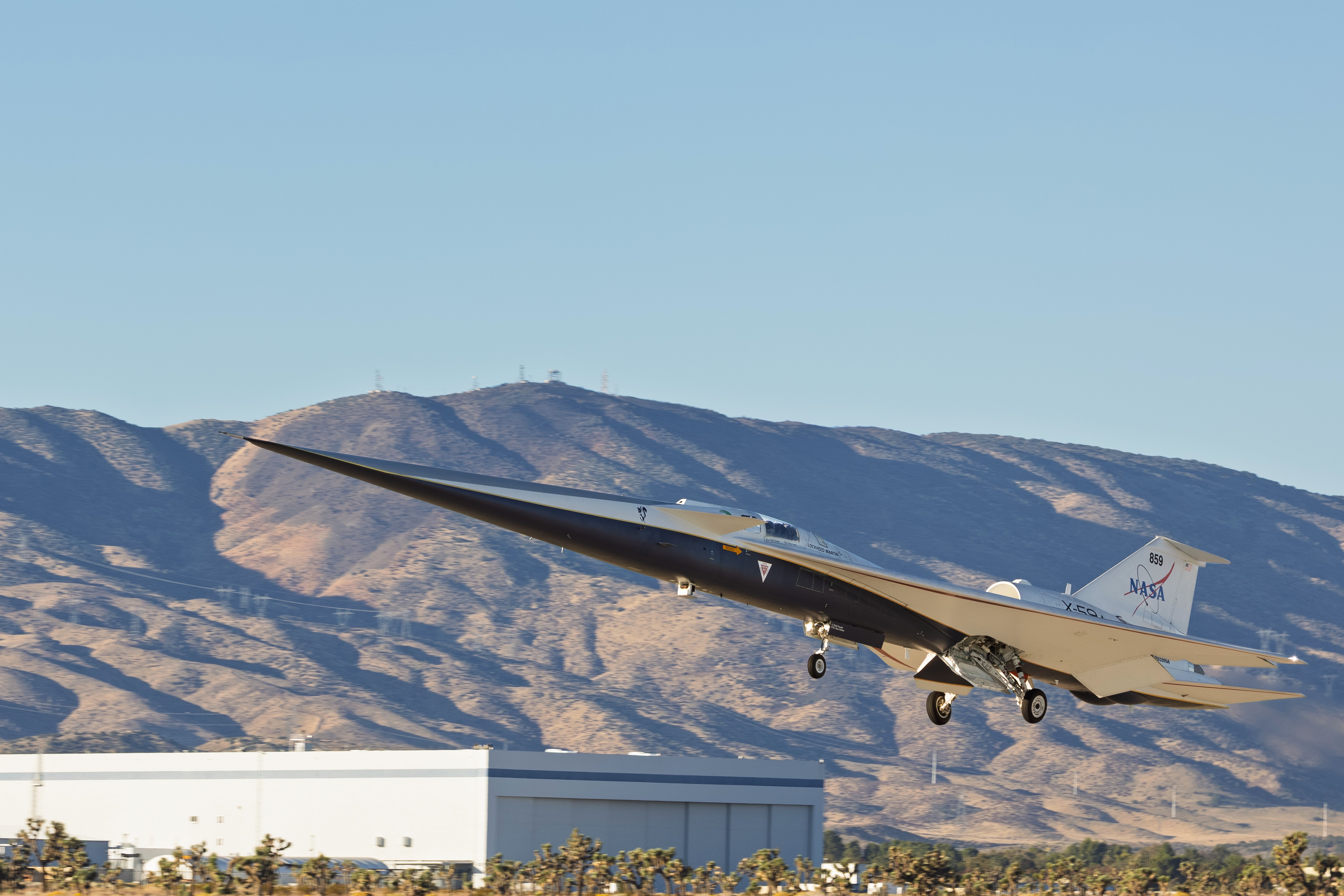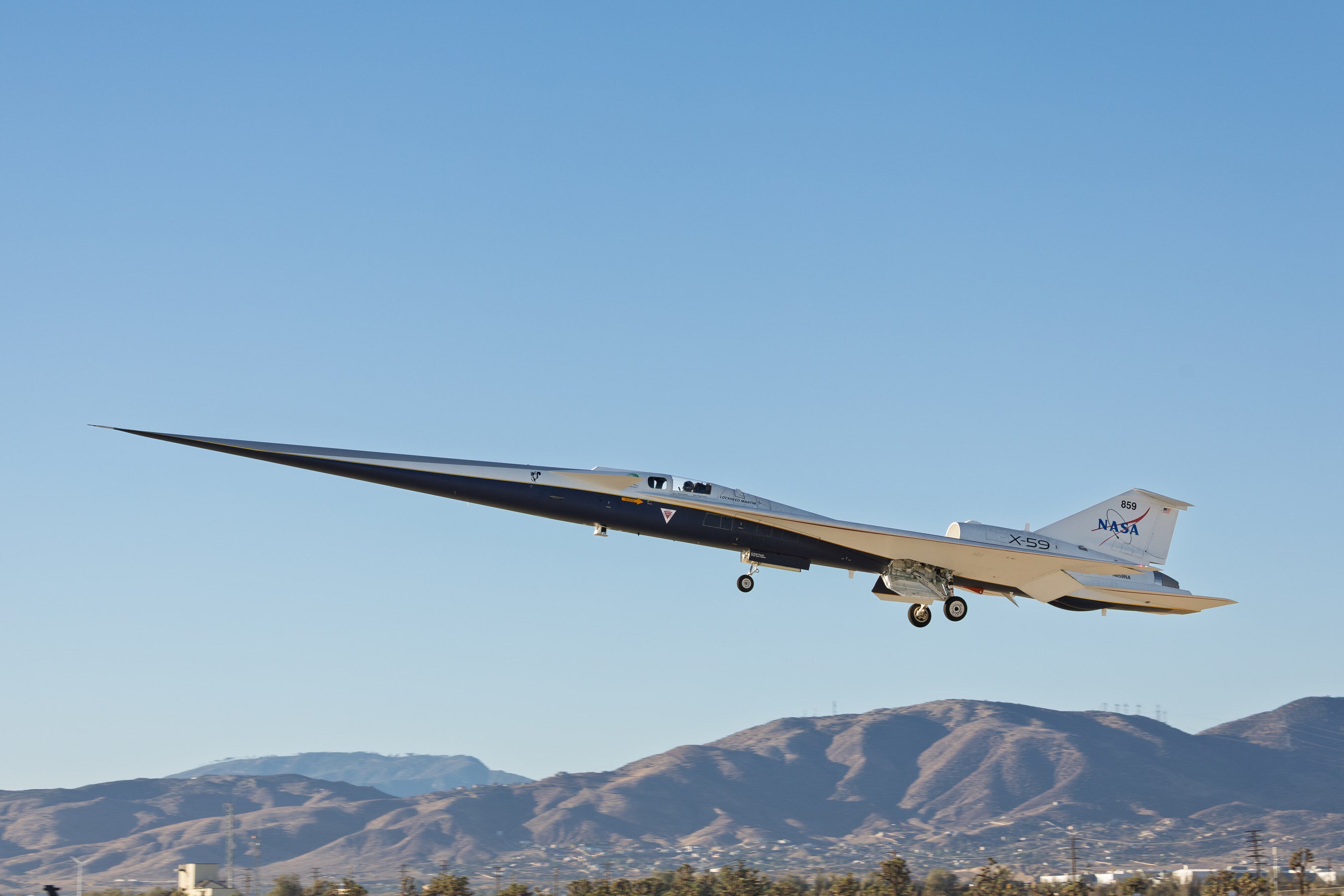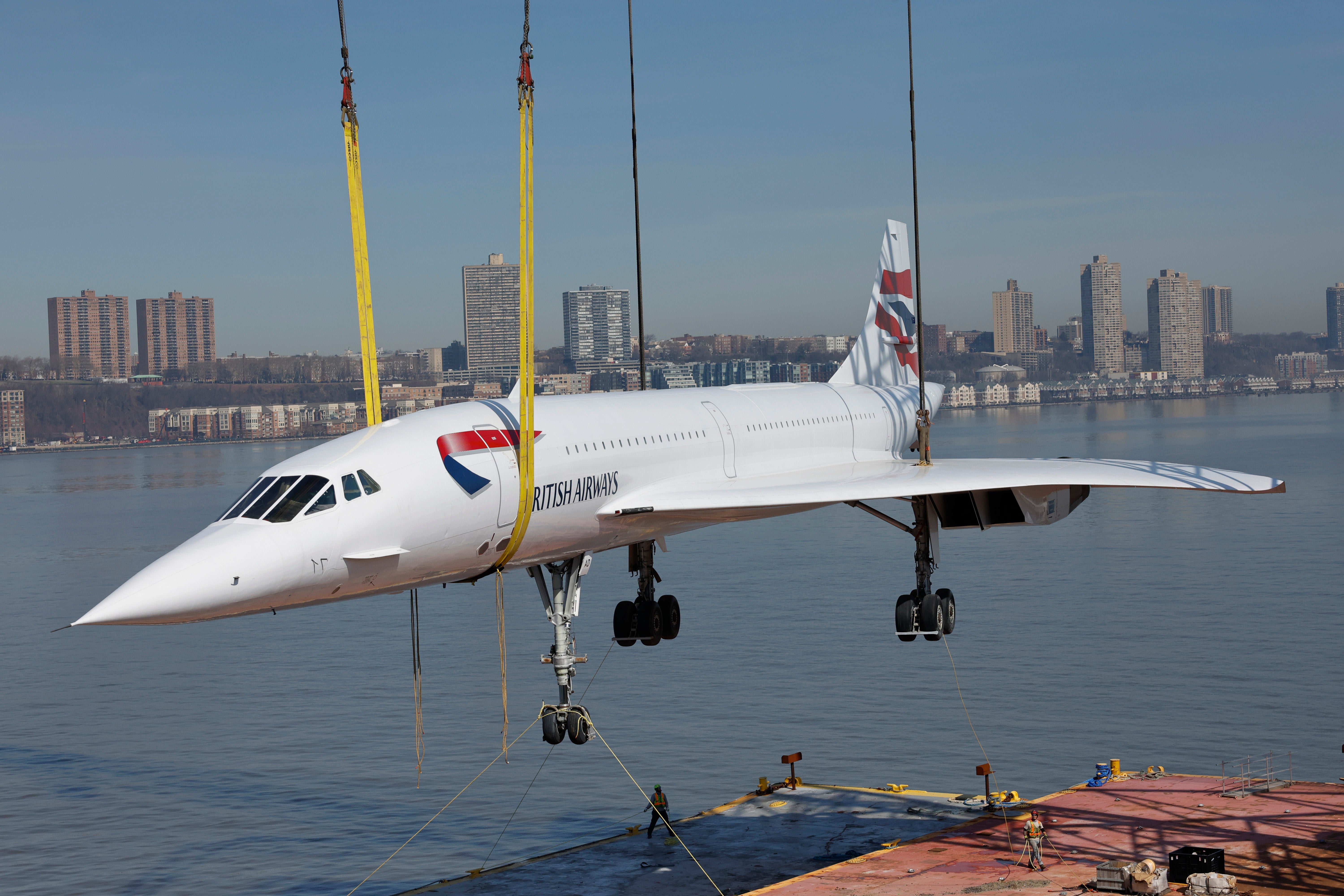The Independent's journalism is supported by our readers. When you purchase through links on our site, we may earn commission.
- Travel
- News & Advice
A ban on non-military supersonic aircraft was lifted by US president Donald Trump, Malcolm Claus writes
Malcolm ClausSaturday 22 November 2025 15:43 GMTComments open image in galleryLockheed Martin and NASA successfully completed the first test flight of X-59, a 'quiet supersonic aircraft,' earlier this week (AP)
open image in galleryLockheed Martin and NASA successfully completed the first test flight of X-59, a 'quiet supersonic aircraft,' earlier this week (AP)
Sign up to Simon Calder’s free travel email for expert advice and money-saving discounts
Get Simon Calder’s Travel email
Get Simon Calder’s Travel email
 Email*SIGN UP
Email*SIGN UPI would like to be emailed about offers, events and updates from The Independent. Read our Privacy notice
An experimental supersonic aircraft called the X-59 took to the skies for the first time in October.
The plane lifted off from Skunk Works, the famed research and development facility in California owned by aerospace giant Lockheed Martin. It cruised for about an hour, before landing at Edwards Air Force Base 85 miles (136km) away.
Nasa’s X-59 is designed to test technology for quiet supersonic flight. In the US, loud sonic booms led to a five-decade ban on non-military supersonic aircraft flying over land.
The ban was lifted this year by the US president Donald Trump, via an executive order. In the UK, supersonic flight over land needs to be specifically approved by the Civil Aviation Authority (CAA), which functions independently of government.
The X-59 aims to turn sonic booms into a quieter “sonic thump”. So if this proves possible, how likely is it that we will see a return to commercial supersonic air travel – not seen since the Concorde passenger jet was retired in 2003?
Beginning in the 1950s, the race to achieve commercial supersonic travel was a long and technically challenging one. Teams from the UK and France, consisting of the companies British Aircraft Corporation and Aerospatiale, the US (Boeing) and the Soviet Union (Tupolev) worked on three aircraft to meet this challenge.
Out of these three competing designs only two: Concorde (UK and France) and the Tupolev TU-144 (Soviet Union) produced prototype aircraft and follow-on planes that entered commercial operation.
 open image in galleryLockheed Martin and NASA successfully completed the first test flight of X-59, a 'quiet supersonic aircraft,' earlier this week (Lockheed Martin Aeronautics)
open image in galleryLockheed Martin and NASA successfully completed the first test flight of X-59, a 'quiet supersonic aircraft,' earlier this week (Lockheed Martin Aeronautics)In the US, the Boeing 2707 aircraft would have carried between 250-300 passengers, three times that of Concorde, and would have done so at a higher cruise speed. However, rising costs, uncertainty about the market for flights and concerns about noise led to the cancellation of the American plane in 1971.
The Soviet TU-144 took to the skies first, on December 31, 1968, while Concorde’s first flight took place in March 1969. The service life of the TU-144 was relatively short, however, lasting from 1975 to 1983.
It initially carried mail, in preparation for passenger services which began in November 1977. However, safety incidents and concern about the economic viability of the plane led to these flights were cancelled in June 1978.
Once passenger flights had been discontinued, the then-Soviet airline Aeroflot operated an updated variant, called the TU-144D, on freight-only services. The withdrawal from service of the TU-144 left Concorde as the only operating commercial supersonic passenger aircraft.
As the standard bearer for supersonic travel, Concorde carried passengers from London and Paris to destinations such as New York, Washington, Rio de Janeiro and Mexico City. But its routes were limited by the US ban on non-military supersonic aircraft flying over land.
The plane operated successfully until July 2000, when Air France flight 4590 crashed shortly after take-off, killing 109 passengers and four people on the ground. Flights by both British Airways and Air France were suspended after the crash, returning only in November 2001. But a lack of confidence and other factors led to the retirement from service of Concorde in 2003.
But within 13 years of the withdrawal of Concorde there was fresh impetus for supersonic travel. In 2016, Nasa launched the Quiet Supersonic Technology (Quesst) project. The aim of Quesst is to investigate aircraft designs which would reduce the sonic boom typically associated with supersonic flight. The centrepiece of the Quesst project is the X-59 an experimental aircraft built by Lockheed Martin at its experimental Skunk Works site in California.
Flying experiment
The X-59 has been designed, manufactured and flown to test both the theories and assumptions relating to low boom technology and to demonstrate that such an aircraft can operate over land without causing disruption on the ground.
The aircraft will act as a flying experiment, collecting data from its test flights which will be disseminated within the aerospace community. This will support current efforts by the companies Boom Supersonic and Spike Aerospace, both of which are proposing their own supersonic aircraft.
About the author
Malcolm ClausSenior is a lecturer in astronautics and space technology, Kingston University
This article is republished from The Conversation under a Creative Commons licence. Read the original article.
So how does the X-59 achieve this? The short answer is in its configuration. The aircraft design has been reached after detailed design work both through extensive computer simulations and through the use of a wind tunnel test programme.
The final configuration which has been reached in effect reshapes the shockwaves produced during supersonic flight, changing the associated boom to a quieter sound. As a result, however, the X-59 does not resemble any conventional aircraft flying today.
The unusual design of the X-59 prevents the shock waves generated at supersonic speed from merging (which would produce the loud boom).
The long, thin tapered nose and other features of the aircraft will mitigate against this by producing a “quieter” boom. This nose, resembling a spear, means that the cockpit for the pilot is located almost halfway down the length of the aircraft.
Its location means that a conventional cockpit window, as seen on all aircraft,` is not possible. Consequently, a number of high-resolution cameras and monitors allow the pilot to fly the aircraft and see what is going on outside.
 open image in galleryA retired British Airways Concorde jet, pictured in 2024 (Getty Images)
open image in galleryA retired British Airways Concorde jet, pictured in 2024 (Getty Images)The X-59 will provide useful flight data on supersonic boom mitigation, which could be applied to future aircraft.
But even when boom mitigation has been addressed, there are still a number of challenges which need to be overcome in order for a new generation of supersonic aircraft to enter service.
A clear and well developed business case will be needed, taking into account the potential customer volume and number of aircraft required. The economics will need to be worked out, such as how much the aircraft costs to operate, its fuel costs and the price of maintenance.
There will also be environmental issues to consider, such as the fuel efficiency of new propulsion systems that can operate for long times under supersonic conditions.
If these challenges can’t be overcome, the rebirth of commercial supersonic travel might remain a distant dream.
Concorde was very successful, but a US supersonic plane ban limited the routes it could fly.
More about
The ConversationCivil Aviation AuthorityDonald TrumpAir travelJoin our commenting forum
Join thought-provoking conversations, follow other Independent readers and see their replies
Comments



